Considered one of the most beautiful countries in Southeast Asia, Vietnam is a huge slender country that can be discovered using a wide range of transportation. From plane to train, from sampan to xe om, on the way to a Vietnam off the beaten track!
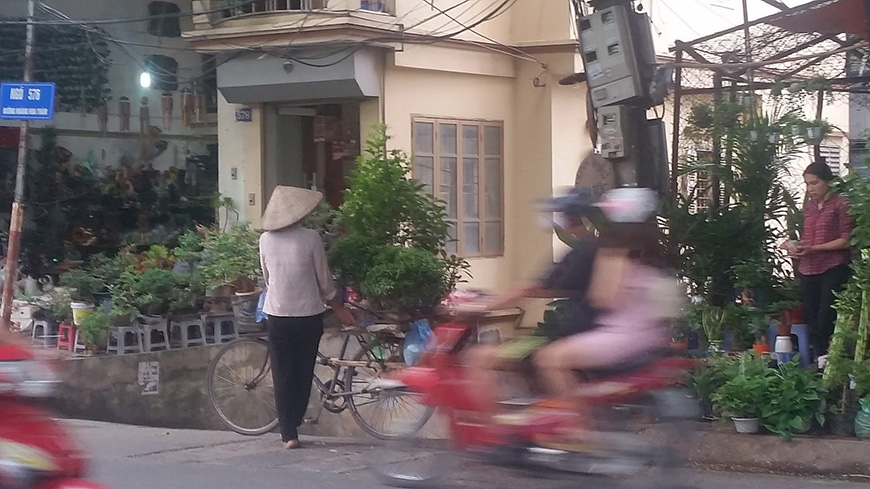
Streets in Hanoi © Mr Linh's team
Update august 2024 : Explore Northern Vietnam in style with our very new private car and van rental service
Introduction to transportation in Vietnam
Transport in Vietnam continues to improve, both in quality and quantity, bringing the greatest comfort to the local population and tourists. Do not miss the opportunity to travel to Vietnam by varying the pleasure! More accessible and convenient than ever, transportation in Vietnam meets different demands. Thereby we prefer plane for long distances or if we hurry, on the other hand, we will choose a typical and traditional sampan to sneak between the karst peaks of the Halong Bay on Land or to travel the arroyos that cross the Mekong Delta. Focus on how to travel in Vietnam in 2023.
► You may also read : The Best Season to Tavel to Vietnam
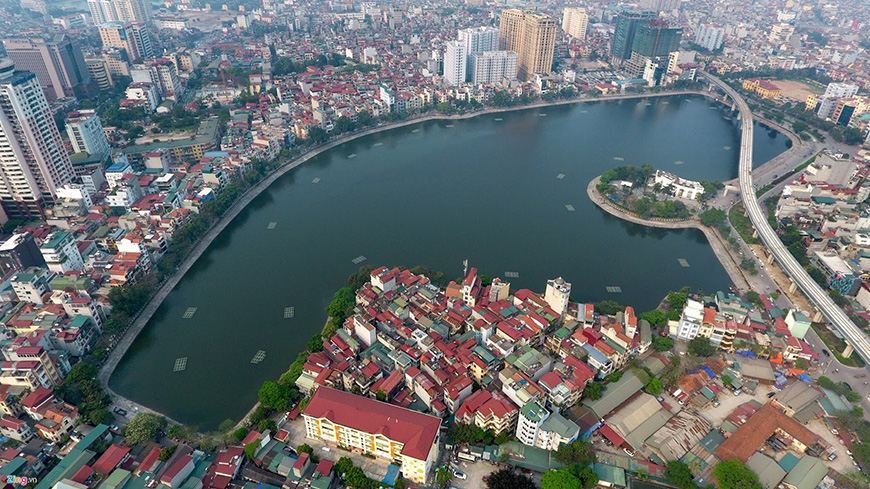
Moving around in Vietnam by plane © Mr Linh's team
Getting around Vietnam by plane
With 22 active airports, including 10 of international scope,
Vietnam has a good network of domestic flights, with several companies operating regular rotations between the cities and provinces of the Country to the two Deltas. The three busiest major international airports are Noi Bai in Hanoi (North), Da Nang in Da Nang (Center) and Tan Son Nhat in Ho Chi Minh City (South). Local airlines are Vietnam Airlines, Vietjet Air,
Bamboo Airways, Pacific Airlines… and offer both domestic and international flights. Each company has its website, so do not hesitate to consult the timetables and prices.
Hanoi Airport
Noi Bai is located about 30 km north of the capital (45 minutes by taxi). It is the largest airport in the North of the country and as such, it is frequented by travelers who arrive in Vietnam and begin their stay from the millennium city to then radiate in the rice fields of Tonkin or criss-cross the fairytale bay of Halong.
In addition to the 5 national airlines, around 22 international airlines operate flights to and from Noi Bai Airport, providing convenient connections to the most popular destinations in Asia, Europe and the world. For domestic flights, apart from Hai Phong and Van Don, you can easily reach any other national terminal from Noi Bai.
Ho Chi Minh City Airport
Tan Son Nhat is located in the district of Tan Binh, either inside the megalopolis, unlike other airports, usually located on the outskirts. However, given the density of traffic, expect about thirty minutes to cross the 7 km that separate the terminal from downtown.
Just like Noi Bai. Tan Son Nhat sees both domestic and international flights, Ho Chi Minh City being the preferred starting point for those wishing to sink into the tropical languors of the Mekong Delta.
Da Nang Airport
It is the 3rd largest airport in Vietnam, after Noi Bai and Tan Son Nhat. It is generally seen as an open door to the Center of the Shapped-S Country with Hue as flagship destinations, the former imperial capital and the romantic old town of
Hoi An, a UNESCO World Heritage Site.
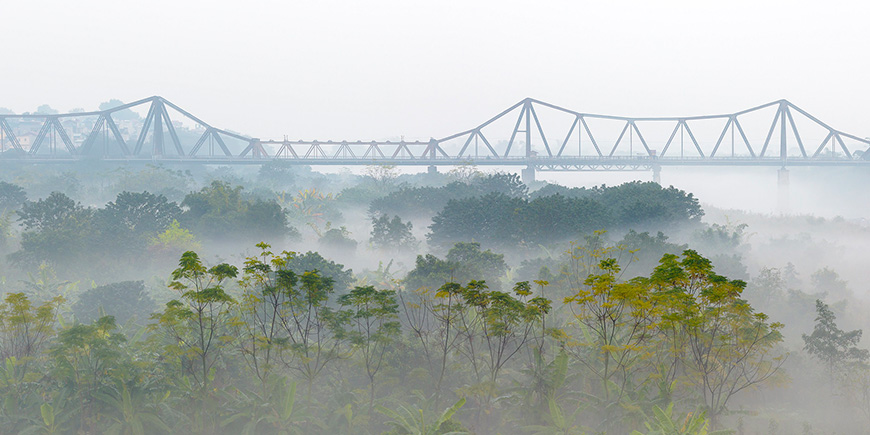
Long Bien Bridge © Mr Linh's Adventures
Getting around Vietnam by train
There is only one line, from north to south and vice versa, 2,600 km long.
Very cheap transportation, it is also the most picturesque for the landscapes crossed and also the longest: count up to 30 hours to reach HCM-city from Hanoi! The price depends on the comfort you choose: a soft seat, a soft berth, a rigid seat, a hard berth or a cabin with 2, 4, 6 berths depending on how much you are traveling. The trick is to only take it at night to save yourself a hotel room while traveling to your destination (typically, Sapa or Hue, from Hanoi). Warning! Long-distance train travel can be more expensive than by plane. Do a simulation on
Bao Lau– an effective website to check seat and berth availability – or on the now famous
12go.Asia.
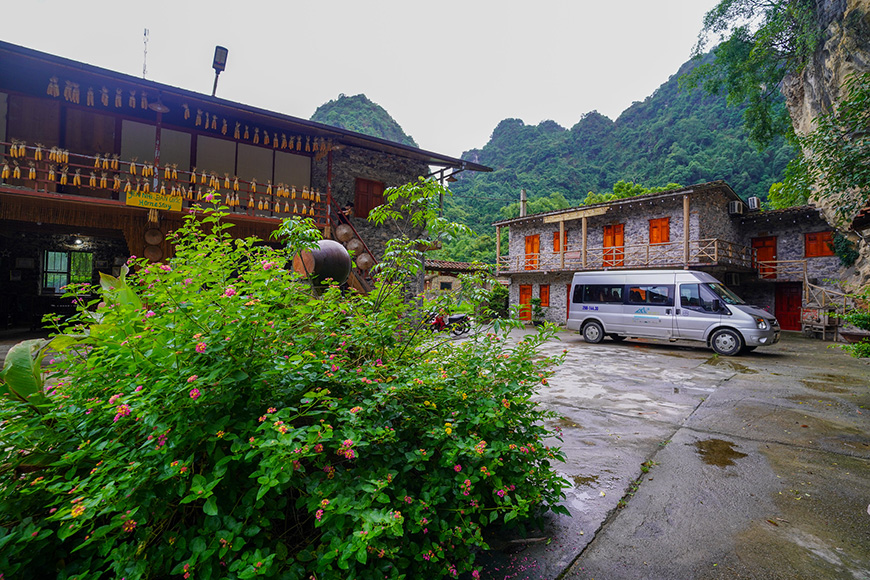
Getting around Vietnam by minivan © Mr Linh's Adventures
Getting around Vietnam by bus
Ideal for short and medium trips, the bus is very popular with both local and foreign travelers.
Perfect as public transport in the city, the bus allows an immersion in the daily life of the inhabitants at an unbeatable price. For an atypical visit of a big city, opt for an open tourist bus, a fun opportunity to see the city differently while being safe. Need to get some fresh air? Choose an intercity bus or even inter-province, whether the line is public or private. Of course a private company will be a little more expensive but comfort will be there. The trick is to take a sleeper bus, comfortable and pleasant to take for medium and long distances. Note that you will be asked to remove your shoes if you take a night bus and on some lines by sleeper bus. Attention: services and comfort can vary considerably depending on the company that operates. The disadvantage of buses is the relative distance between bus stations and city centres.
► Have a look to our Guide to Ha Giang Loop
.jpg)
Motorbike in Hanoi © Mr Linh's Team
Getting around Vietnam by taxi, car
Very popular in Vietnam, the taxi suffers from a fairly universal reputation of tourist trap, with fees as fanciful as dishonest. However, by choosing one of the two safest and best-known companies in the country, you should not have any unpleasant surprises. Mai Linh or Vinasun will accompany you in peace in your intercity travel.
If you are staying in Vietnam for a while, it may be a good idea to install an app like Grab on your smartphone. It offers journeys by car, minivan, motorcycle bike ... at prices tight and displayed before your circuit. Here no bargaining that turns at your disadvantage or route more or less well understood/ followed, but a real transparency on prices otherwise very interesting. Grab, but also Gojek, Bee… also offer food delivery services. We will avoid taxis for long distances, too expensive compared to buses or train.
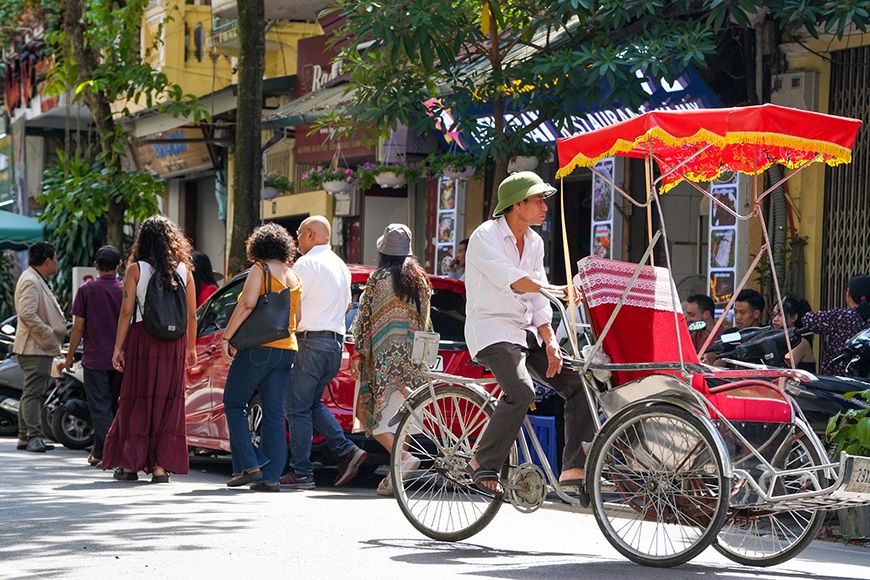
Discover Hanoi with a rickshaw © Mr Linh's Adventures
Travel in Vietnam in xe om, or grab bike
Similar to the previous point, an app like Grab also allows you to book a scooter (or even a tuk tuk, if necessary – very common in Cambodia). Simple, reliable and practical, you will not be able to do without it for your urban trips, or in case of an evening a little too drunk. In any case, Grab Car or Grab Bike, you will choose according to your preferences: the car for the comfortable, intimate and safe side, or the motorcycle, to feel the local life in all its noisy agitation. As for the Xe Om, you can’t miss it: it’s the one who takes a nap lying on his motorcycle, before offering you a race that you will certainly have trouble bargaining…
► Read our Hanoi Highlights and Travel Guide

Booat ride on Ba Be Lake © Mr Linh's Adventures
Getting around Vietnam by boat
Not surprisingly, the famous Halong Bay, but also the languid Mekong Delta can be discovered by boat, during a cruise ranging from one to 2 or 3 days (more if you like !).
But many other sites, such as Ninh Binh, the aptly nicknamed Halong Bay, or the mangroves of the South of the country are sites that are best appreciated from
a traditional sampan. For
the most adventurous among you, some parts of some river or stream can be crossed
by boat, just like
Ba Be Lake or Thac Ba wich reveal all the magic of their green setting from a more or less motorized boat.
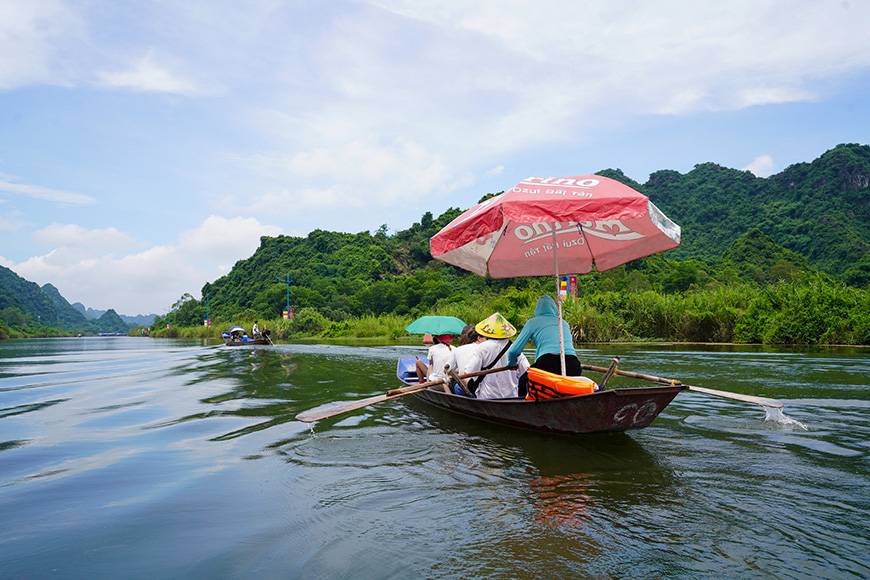
Discovering Tam Coc © Mr Linh's Adventures
But also…
A surprising country in more than one way, Vietnam can be appreciated at your own pace during a bike tour, during treks and hikes, the city centers of Hanoi, Hue, Hoi An or even Saigon gain in point unusual and memorable views from a Xych Lo, or rickshaw.